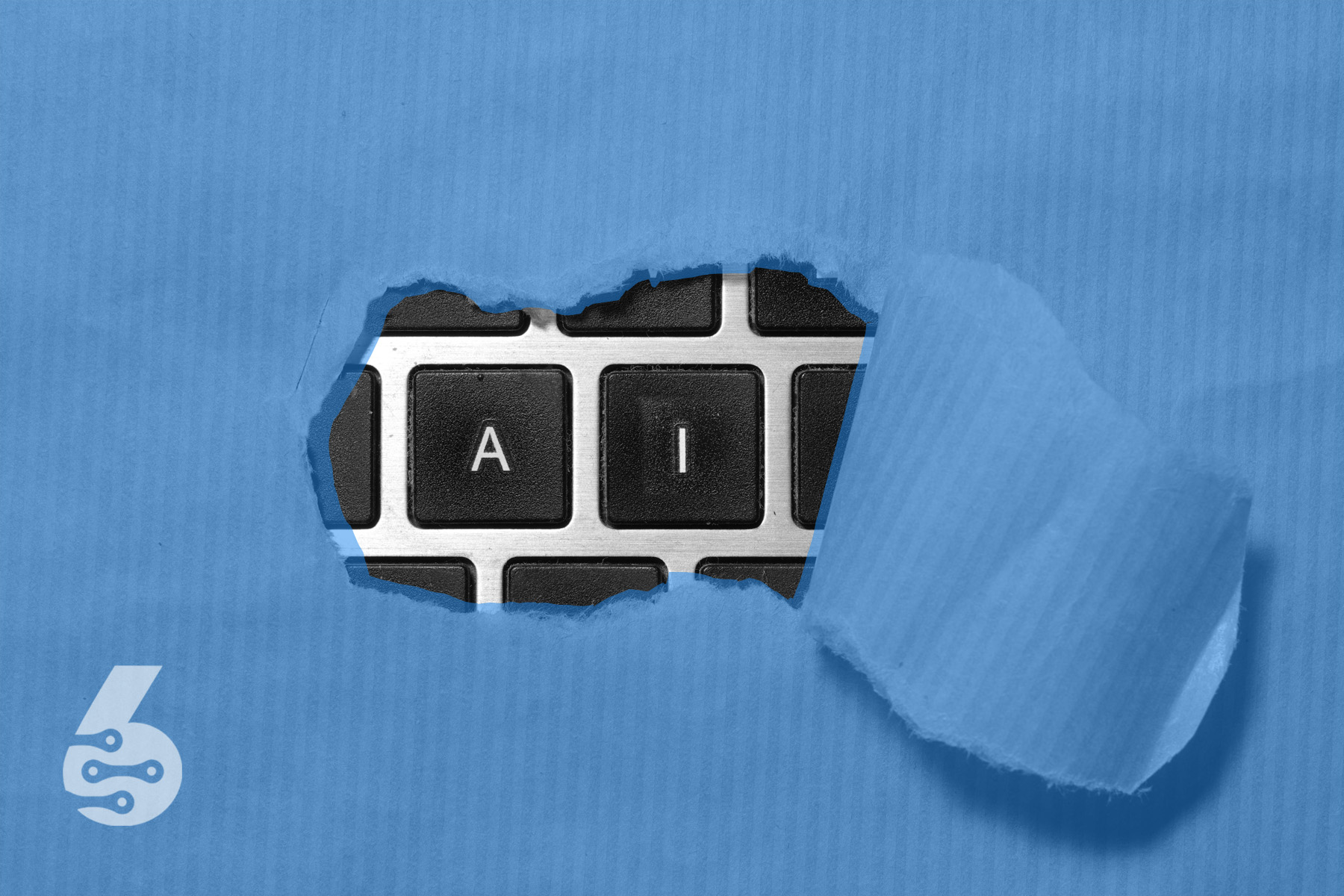- ERP Systems
- 18.07.2022
10 key features SMEs should look for in a modern ERP software
Things to consider before choosing an ERP Solution
Dr. Andreas Maier
18.07.2022
“ End results modeling and pilot room testing with the company can eliminate surprises and uncover almost all “invisible” ghosts in the closet. “
SMEs are the backbone of the economy. SMEs account for 99.7% of businesses in regions like Europe and the U.S. and employ over 60% of the workforce. But even though they're critical to economic growth, SMEs often struggle to manage even the most basic tasks, like finances, customer data, inventory, or employees. This struggle is partly because most small businesses don't have the resources to invest in enterprise-grade software solutions.
But there's good news: modern ERP software is now more affordable and user-friendly than ever before, making it a great solution for SMEs that need to streamline their operations.
What to look for in a good ERP solution for SMEs?
There are a few key features that any good ERP software solution should have:
- Easy to use and implement
2. Cloud-based for easier access and collaboration
3. Affordable
4. Scalable to grow with your business
5. Offers real-time insights into your business operations
6. Integrates with other software solutions
7. Helps automate manual tasks
8. Supports multiple languages and currencies
9. Role-based Security
10. Remote Access
1. Easy to use and implement
When looking for ERP software, SMEs should prioritize those that are easy to use and implement. Ease in use is important, as an ERP should not require dedicated staff members to use it effectively, and it should be easy for all employees to get up to speed fast. Additionally, look for ERP software that fits your company's needs in terms of functionality. Ensure the software can handle your core business processes and has the features you need to run your company efficiently.
Think Business, Let SIX ERP Handle the Rest.
2. Cloud-based for easier access and collaboration
Long discussion about self-hosted, on-premise, or in the cloud. It is almost always cheaper to use a cloud-based solution to save costs if SMEs don't have their own IT. Important to compare the TCO costs and see what internal resources are available for the ERP not to become a bottleneck.
Cloud-based ERP can be a great choice for SMEs because it is often cheaper and easier to access and collaborate with than on-premise ERP. The ERP provider or the customer can host cloud-based ERP, and both options have pros and cons.
Hosting by the ERP provider can be cheaper in the short term but more expensive in the long term if the provider raises rates or the customer needs to upgrade to a new version of the software. Hosting by the customer can be more expensive in the short term, but it can be cheaper in the long term if the customer owns the software and does not have to pay license fees to the provider.
Another advantage of cloud-based ERP is that it is often easier to access and collaborate than on-premise ERP. With on-premise ERP, employees must be on-site to access the software. With cloud-based ERP, employees can access the software from anywhere with an internet connection. This can be especially helpful for SMEs with employees located in different parts of the country or world.
Cloud-based ERP also makes it easier for employees to collaborate. With on-premise ERP, employees must be in the same location to share files and work on projects together. With cloud-based ERP, employees can share files and work on projects together from anywhere with an internet connection.
There are some disadvantages to cloud-based ERP as well. One is that it can be more complicated to customize than on-premise ERP. Another is that integrating with other software systems can be harder. And finally, if the internet connection is unreliable, it can be difficult to access the software.
Despite these disadvantages, cloud-based ERP can be a great choice for SMEs. It is often cheaper and easier to access and collaborate than on-premise ERP.
3. Affordable
Small and medium-sized businesses are always looking for ways to save money, and implementing affordable ERP software is one way. Good ERP systems will automate many of the tasks employees currently do manually, saving time and money. Additionally, a good ERP system will help businesses make better decisions by providing them with accurate and up-to-date information about their business operations.
4. Scalable to grow with your business
ERP software must be scalable, as businesses must consider potential future requirements. For example, if a company experiences rapid growth, it will need a system that can accommodate that growth. Additionally, an ERP should be able to adapt to changes in the business environment, such as new regulations or standards.
5. Offers real-time insights into your business operations
Modern ERP software offers real-time insights into business operations, giving the team basis for decisions and letting them act faster. This is important for SMEs because it allows them to keep up with the competition and make the most of their resources. Real-time insights can help identify inefficiencies and potential problems to fix them quickly. Additionally, it can help managers make better decisions about where to allocate resources and how to grow the business. Real-time insights are a valuable tool for SMEs and should be a key factor when choosing an ERP system.
6. Integrates with other software solutions
When looking for modern ERP software, it is important to find one that easily integrates with other software solutions. Integration with many different external software solutions and APIs will make it easier to manage your business operations and keep track of all the important data. Additionally, it can help reduce the time spent on data entry and synchronization.
7. Helps automate manual tasks
ERP software should help SMEs automate as many manual tasks as possible to reduce the time spent and the effort needed to complete these tasks. By automating these tasks, SMEs can improve their efficiency and productivity. SMEs must first understand what could be automated before selecting an ERP software.
8. Supports multiple languages and currencies
SMEs need to have multiple languages and currencies covered, as most SMEs need to work with international clients and suppliers. A modern ERP software should support multiple languages and currencies so that SMEs can seamlessly conduct business across borders. Modern ERP software should also offer currency conversion so SMEs can easily track their expenses and profits in different currencies.
9. Role-based Security
The importance of role-based access control cannot be overemphasized, especially for SMEs. Many SMEs tend to share accounts, which can lead to security breaches. Having separate accounts for each user prevents unauthorized access to sensitive data and helps ensure accountability.
SMEs looking for modern ERP software should know the security risks associated with sharing accounts. Many cloud ERP systems are per user per month, leading to high costs if multiple employees use the system. Due to this per user per month costs, SMEs are sharing accounts which can lead to severe security breaches. SMEs should carefully consider these risks before selecting an ERP system. Other solutions offer more security and accountability for SMEs with unlimited users like SIX ERP.
10. Remote Access
With the rise of the mobile or remote workforce, it has become increasingly important for ERP systems to offer remote access. This way, employees can access the system from anywhere, at any time. This is especially helpful for sales teams who are often on the go.
Conclusion on ERP Features for SMEs
When looking for a modern ERP software, we think that SMEs should especially consider the following key features: 1. scalability to accommodate future growth, 2. adaptability to changes in the business environment, 3. real-time insights into business operations, 4. easy integration with other software solutions, 5. ability to automate manual tasks, 6. support for multiple languages and currencies, 7. role-based security, 8. remote access, 9. per user per month costs or unlimited users option like SIX ERP offers. Considering these key features will help SMEs find an ERP system tailored to their specific needs and can help them grow their business efficiently and effectively.
If you are an SME looking for modern ERP software, then contact SIX ERP today. We offer all of the features listed above and more, and our solutions are tailored to your specific needs with unbeatable and transparent pricing.
Contact us today to learn more about how SIX ERP can help your SME grow.
About the author
Andreas Maier is a results-driven CEO with nearly 30 years of experience in ERP, digital transformation, and IT consulting. He has held leadership positions in Fortune 100 companies such as rentalcars.com (PCLN) and Intrasoft International, a leading EU-based R&D software vendor. With a Ph.D. in Neural Networks from the University of Cologne, Andreas combines deep technical expertise with a strategic approach to business process optimization.
As the founder and co-founder of multiple successful startups, including XXL Cloud Inc., eShopLeasing Ltd, and WDS Consulting SA, his expertise lies in ERP consulting, IT strategy, and process automation. His work is focused on helping businesses implement scalable ERP solutions, streamline operations, and drive digital transformation.
Related articles

Agentic AI + MCP: The New Nerve Center of ERP
Agentic AI is the next step after large language models learned to read and write. Instead of waiting for a user to ask something, an agent can set a goal,...
Purchase Management done right
Are you tired of feeling like your purchase management process is a never-ending nightmare? If you're looking for a way to streamline and simplify your approach, you've come to the...



